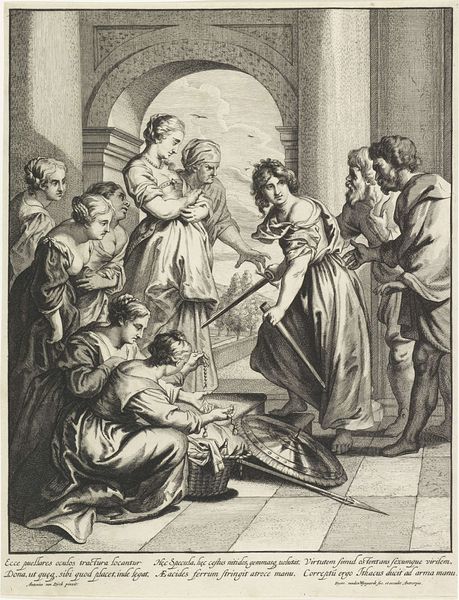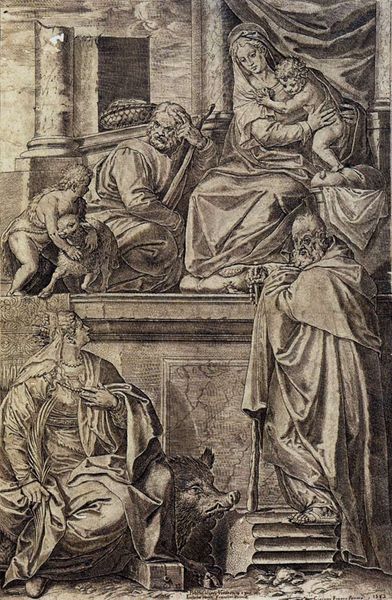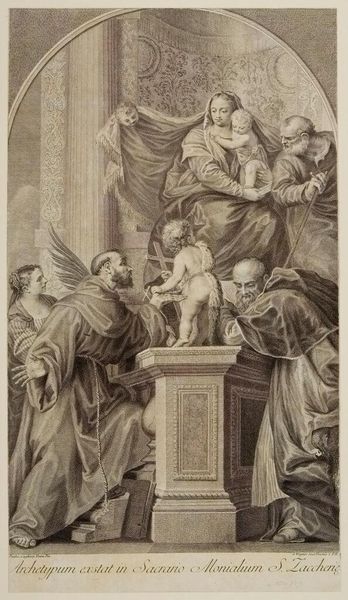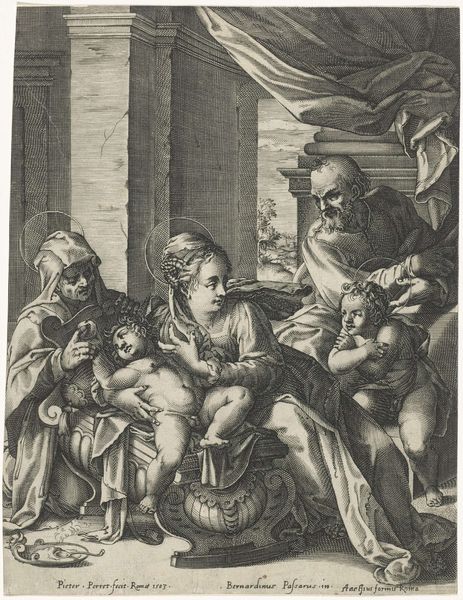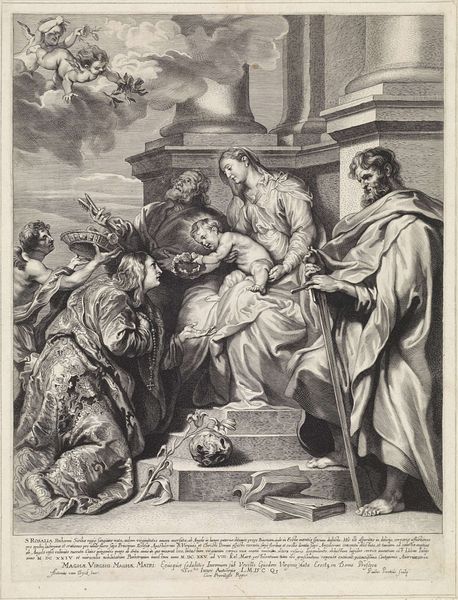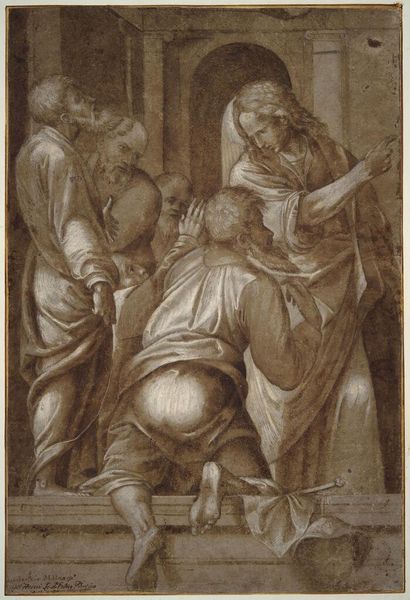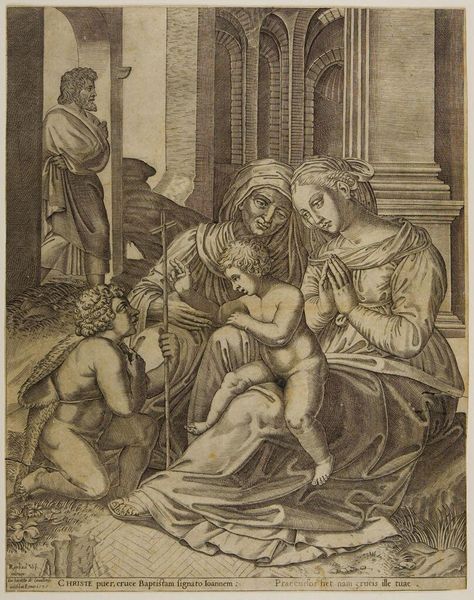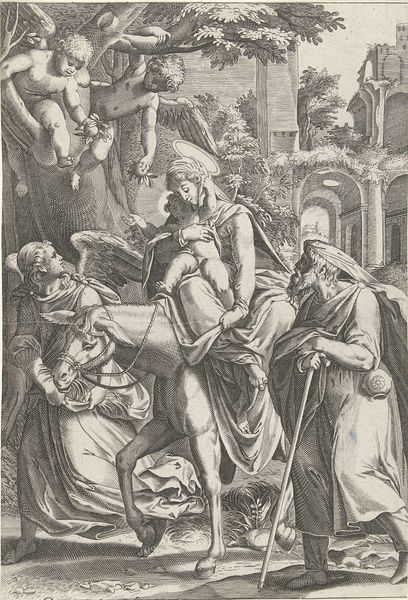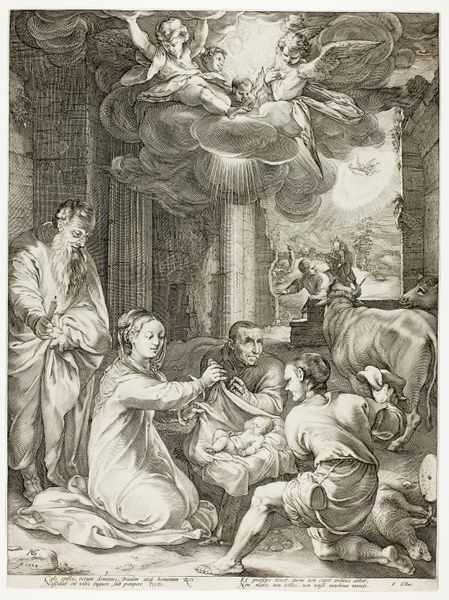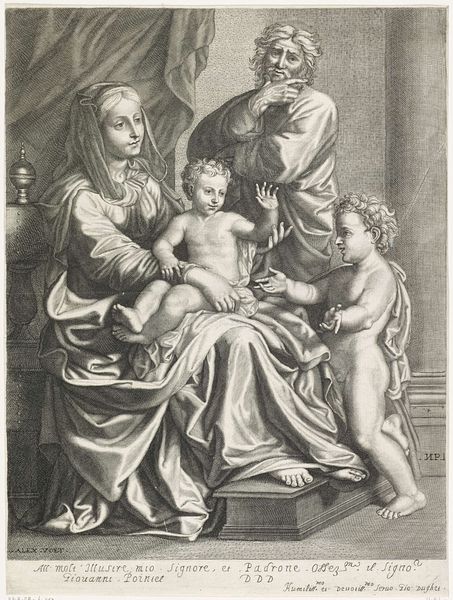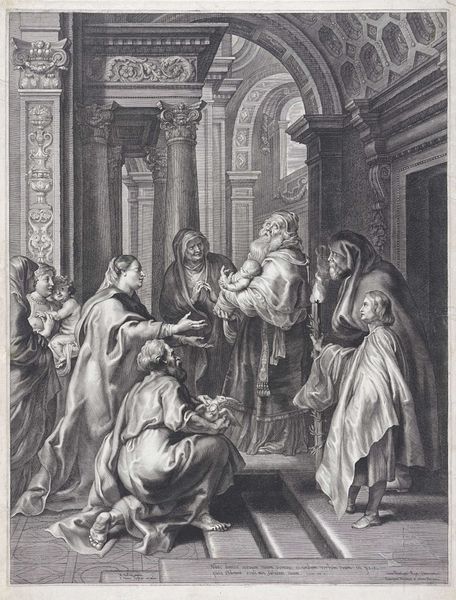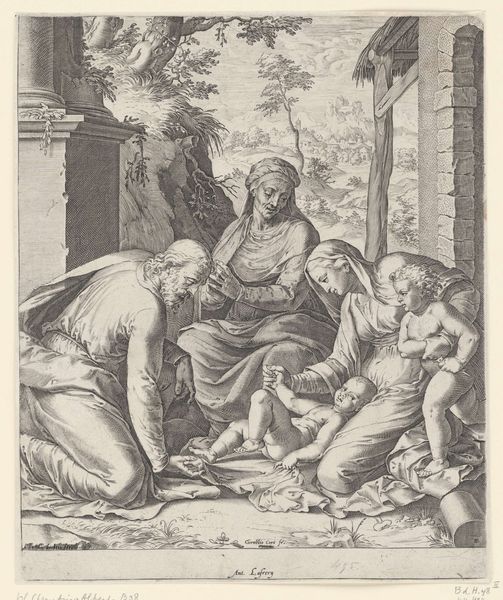
Holy Family with Sts Anthony Abbot, Catherine and the Infant John the Baptist 1551
0:00
0:00
painting, oil-paint
#
portrait
#
venetian-painting
#
allegory
#
painting
#
oil-paint
#
figuration
#
oil painting
#
group-portraits
#
animal portrait
#
christianity
#
history-painting
#
italian-renaissance
#
portrait art
Dimensions: 313 x 190 cm
Copyright: Public domain
Curator: Veronese painted this arresting altarpiece in 1551. It's entitled "Holy Family with Sts Anthony Abbot, Catherine and the Infant John the Baptist." Oil on canvas, naturally. Editor: My first impression? There’s a gravity here, but also a lightness in the flesh tones. Almost theatrical, with figures dramatically poised on different tiers. Curator: Indeed. We see how Veronese boldly experiments with composition and representation of space. The layering and asymmetry reflect the increasing tensions of Reformation era spirituality. The sacred family is not just placed next to saints, they are placed on different ground levels, emphasizing social difference through their attire and placement in the frame. Editor: The lamb and the boar fascinate me—the lamb so central to Christian symbology, innocence, sacrifice, and then juxtaposed with that rather menacing-looking boar at the foot of the structure... a more primal symbol. Is that Saint Anthony's traditional companion? It is a complex sign, linked to his triumph over worldly temptations, the bestial instincts. The saint’s own internal battle visualized beside the purity of Mary. Curator: Precisely. The boar also subtly evokes the power and patronage of secular figures and merchant princes of the area who benefited greatly from the saint’s favor. And it stands in direct relation to the placement of Saint Catherine in the lower tier who as a female figure of devotion serves as an interlocutor and even a supplicant towards Mary’s level. This positioning of figures gives the painting a sense of social realism beyond a traditional Christian iconography, suggesting an interaction and an intersectionality between divine will and public power. Editor: Note the details of the robes, too; Saint Catherine’s is sumptuous, almost sensual. You can practically feel the weight of the fabrics... each has their specific story to tell... it's clear Veronese understands how to speak through visual language, the vocabulary of objects and vestments. Curator: His color palette heightens this tension, the soft blush tones of skin contrasted with somber blacks. These formal choices open up discussions about social anxieties during this era, anxieties very pertinent to our conversations today. Editor: It’s astonishing how layers of symbolism and context add depth. Curator: Art is rarely simple.
Comments
No comments
Be the first to comment and join the conversation on the ultimate creative platform.
